Techstep
byA modest room on the third floor of a Victorian warehouse in Acton, West London, where recording equipment included only an old 16-bit Akai S1000 stereo sampler, a dozen and a half FX-effects, a Yamaha SY22 synthesizer, a
This room became the birthplace of techstep. Cold, dark, obsessively mysterious, it determined the mood of drum‘n’bass musicians for many years to come. Techstep was the perfect counterpoint to ragga jungle and the whole jungle community, affected by the Jamaican virus. In the second half of 1995, former junglists and now drum‘n’bass figures took a new course and began to develop a new movement. The invention of techstep really came in handy.
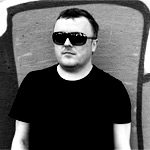
DJ Trace
The first techstep track was a remix of a known jazzstep track Mutant Jazz, which came out in the second half of 1995. Even then, you could hear a minimal amount of drums, a humming bass and compulsively wicked atmosphere above your head. Thoroughly edited samples, taken from funk records, were the base of the rhythm. The base for the humming bass was a recreated extract of a techno track from the second half of the 80s.
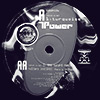
T.Power vs. MK-Ultra — Mutant jazz (DJ Trace remix) 1995
Remixed by Duncan Hutchinson
From Turquoise / Mutant jazz single, SOUR
Alex Reece
Pulp fiction
1995
Two men with similar names indirectly participated in the creation of the techstep structure. The first is Alex Reece, who in 1995 published a minimalist track that, according to many musicians and music publications, changed drum‘n’bass. The composition of Pulp Fiction had a completely different rhythmic figure. Before, there were only two states of drums: jungle and drum‘n’bass. But Reece showed a third, 2-step state where the rhythm is steady and the bass drum makes only two kicks: pom-nothing-pom-nothing. Roughly speaking, if you remove every second kick of the bass drum from house or techno, you‘ll get 2-step.
Kevin Saunderson
Just want another chance
Kevin Saunderson
Just want another chance
The second man indirectly involved in the creation of techstep was Kevin Saunderson nicknamed Reese (from his middle name Maurice). In 1988, Saunderson released a techno song Just want another chance, which contained the distinctive bass that was later appreciated by the head of No U Turn who was also one of techstep‘s founders—Nicholas Sykes (Nico). Actually, a similar bass line was used in 1994 by Ray Keith in Terrorist, but it was after the invention of the techstep Reese bassline that it became omnipresent.
Ed Rush
Killamanjaro
1996
The founders of techstep (Ed Rush, Trace, Nico) released enough material in 1996 to draw notice not only to themselves, but also to their creation. And it did happen: Grooverider adopted techstep and its aggressive promotion started in clubs as well as on the shelves of music shops. Techstep themes make up more than half of the tracks of his compilation Prototype Years. The Ed Rush‘s single Killamanjaro released by Prototype label became the anthem of 1997 while in 1996 this honourable title belonged to Skylab, which was released by the label of the almighty Goldie.
A map of Detroit and the Metalheadz logo hovering over the city—this was the idea of John Black who made the sleeve for Skylab. Perhaps Detroit is a reference to the digitally recreated bass part of a track from the techno age, where this style emerged in the early 80s. Perhaps it reflects the sound of the track: its technical mastery of the rhythm, indifferent melody and desperate future. Actually, it doesn‘t matter, because drum‘n’bass entered a new stage of development. When jungle plunged for a while into the first stage of darkside—darkcore—you could say that it became itself, finding more differences than similarities from hardcore. During the second coming of the dark forces, drum‘n’bass found more differences from jungle and finally became a fully-fledged independent phenomenon.

Ed Rush
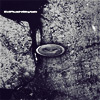
Ed Rush — Skylab 1996
From Skylab single, Metalheadz
People love to compare techstep and darkcore, to hint at the continuity of the genres and to talk about the drug experiments of musicians who were high while creating their masterpieces. After three years, ecstasy dropped out of the range of their favourite substances and now cannabis derivatives became popular: ganja and skunk. The last one, a hybrid variety of cannabis, which contains from eight to twenty four percent tetrahydrocannabinol, is a chemical compound causing hallucinations, unreasonable anxiety and fear, which is basically the main musical feature of techstep. When the guys from No U Turn were asked how they created their tracks, the head of the label (Nico) said that they spent a long time (all night) with red eyes in the ganja smoke—like in horrific experiments, where the guinea pig‘s nervous system gets slowly but surely suppressed. Ed Rush confessed that he consciously smoked to reach a gloomy state of mind, because otherwise he couldn‘t achieve the necessary consistency of anxiety in his tracks.
Anxiety means a lot in techstep. It’s literally the base of the right sound. Almost all techstep tracks are made by a formula that includes a frequent minimalist percussion underneath and a compulsive mystic atmosphere above, not a flat one like in films, but like in real life, representing again a decline of civilization and not promising its recovery. It creates an interesting panorama: musical layers are on opposite poles; they interact with each other, but don't merge. The middle, meaning the horizon, always remains empty. It‘s always like this in techstep—there is a permanent void, some emptiness inside. If anything, techstep is a minimalist version of darkcore.
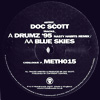
Doc Scott — Drumz ’95 1995
From Drumz ’95 (Nasty Habits remix) / Blue skies single, Metalheadz

Doc Scott
One of the most important strands linking the dark forces of 1993 and 1996 is a techstep remix of a darkcore hit Here come the drumz by Doc Scott.
Techstep is a music of unknown empty planets, ambient music for heartless and aggressive space, the essence of RoboCop, Blade Runner, Terminator, Alien, Predator and other super-technological movies heroes of their super-age. This is a deeply sci-fi music from the future, which is ruled by deeply emotionless scientists who are deeply indifferent to the future of their people. Jonny L watched Apollo 13 and created one of the anthems of 1997—Piper.
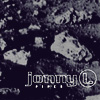
Jonny L — Piper 1997
From Piper single, XL Recordings
Second Phase
Mentasm
1992
Piper is probably a good illustrative example of the percussion technique and of the definition of techstep which doesn‘t imply that it was created under the influence of techno. It‘s rather closer to industrial music with distorted drums, an even more distorted bassline, the presence of noise and some foreign sounds, and a not exactly healthy atmosphere. The experts talk about the influence of Belgian hardcore from the beginning of the 90s on techstep; it was mainly produced by R&S Records, with the horse in the logo, just like Ferrari.
Meanwhile, there is no unanimous opinion about who coined the term techstep. Some say that the word entered everyday life thanks to the creators of the genre; others claim that the credit belongs to the Techsteppin compilation, which was released by a SOUR branch—Emotif Recordings (with subtitle: a journey into experimental drum & bass). Considering that the compilation mainly consists of No U Turn guys‘ material, just under different names, and the fact that it was Trace who made a selection for this landmark compilation, you can say that one way or another, the name belongs to the founding fathers.
In the Dynamics track, Dominic Angus fully reflects the roots of the subgenre and demonstrates the continuity of generations as well as the transition from one style to another—techstep emerged from hardstep, just by getting rid of the needless drums.

Dom & Roland — Dynamics 1996
From Dynamics / The planets single, Moving Shadow
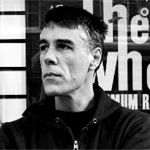
Nico
“When I put a needle on the record, I immediately feel energy”, confesses Nico Sykes. “But nice and sweet melodies like in ambient drum‘n’bass don’t appeal to me. It’s just music for lifts, background music for a nice time at sunset on a Sunday evening, nothing more. The real power of drum‘n’bass is in its fast changeability. Like the rhythm of our restless life and the technological world we live in. Rapidly evolving technologies present themselves as a new religion and it creates fear, it makes you feel lost.“ In 1997, No U Turn label released a compilation called Torque with tracks of their own production. The name of the compilation as well as the names of the tracks (Droid, Sector 3, Proton, Crystal, Coma Tone) represent an exercise in technicality, industrialization and total soullessness, an absence of the human. Perhaps if intelligent robots located in some military base could create music, it would sound like that. In darkcore, the grandfather of techstep, the track titles reflected the mystical (esoteric) component of the tracks, chemical experiments of new times, malice and the worst human features. Techstep, by naming the tracks in this style, justifies its name, its reason for self-definition.

Ed Rush & Nico — Sector 3 1997
From Torque compilation, No U Turn

Fierce & Nico — Crystal 1997
From Torque compilation, No U Turn
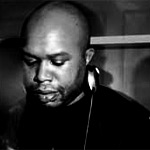
Grooverider
In the same year, one of the godfathers of jungle and drum‘n’bass, the lord of the dark side of the genre—Grooverider, released the compilation Prototype Years. It was a mixture of popular techstep and the coming wave of neurofunk. Grooverider openly commercially supported the new heroes of the stage, the new trend-setters, not only in the club, but also at his own Prototype Recordings label. Of course, techstep musicians got enough attention (especially the No U Turn guys), but a compilation called Grooverider Presents is probably the sweetest moment for a musician of the drum‘n’bass crowd and the highest stage of recognition. The appearance of a themed compilation from Grooverider himself on the shelves of shops doesn‘t show bad taste on the part of the compiler, it’s a mark of quality of the genre. Techstep was getting completely legitimised.
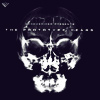
John B. — Secrets 1997
From Prototype years compilation, Prototype

Dillinja — Silver blade 1997
From Prototype years compilation, Prototype

Dom & Roland
Dom & Roland isn‘t a very well-known person but he did a lot for techstep. In 1995, Dominic, with his favourite
A true domen
A true domen
“I want to hurt people with my beats”, adds Ed Rush to the manifesto of the techstep movement. And in fact, one of the mottos of this leading label is hurter‘s mission. According to some sources, this phrase was present on some, if not all, No U Turn records—it was scratched out on the matrix when making impressions for the future creations which would be soon distributed to music shops. For a very short period of time, techstep became a massive craze. In just a few years, the phenomenon would gather a circle of serious like-minded musicians, who first would lure drum‘n’bass to the dark side (Darth Vader‘s appeal was heard :-) and then would listen to accusations that drum‘n’bass died before it could separate from jungle.
Music & stories
12″ pages on social networks and weekly materials that you can’t find on the website. Cool electronic music videos, tune of the week, histories behind albums and FridayFive tracks. Join!